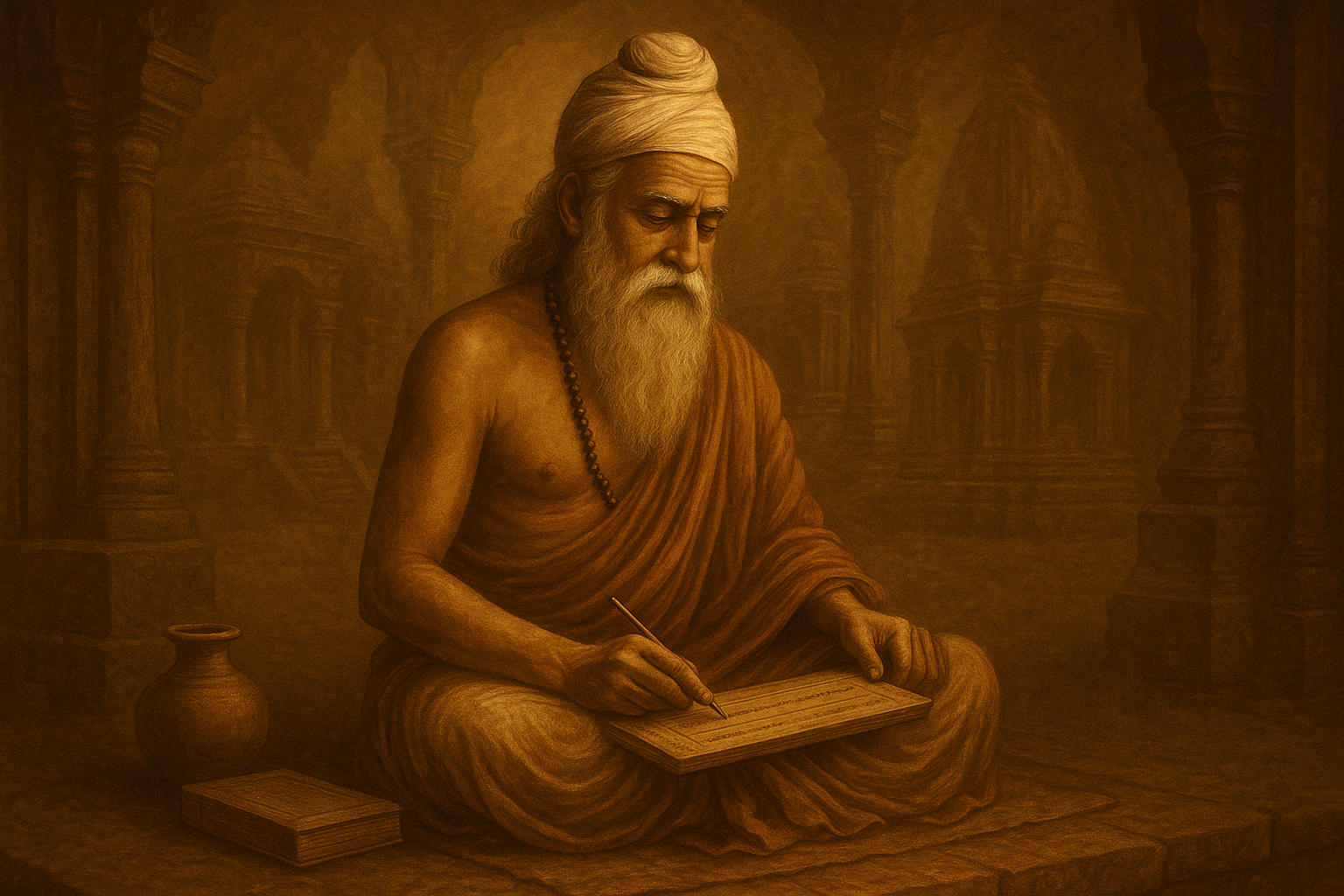
Ancient Wisdom Series
Valmiki
Poetry & Dharma
- Revered as the Ādi Kavi — the first poet of Sanskrit literature
- Author of the Ramayana, one of the two great Indian epics, composed in shloka (metrical verse)
- His transformation from a highway robber named Ratnakar to a realized Rishi is one of the most inspiring redemption arcs in spiritual literature
- Introduced ethics, dharma, and devotion in the form of a narrative poem, deeply shaping Indian culture, art, drama, and values
Lineage & Background
birthName
Ratnakar (or Lohajangha)
Initially born into a hunter or robber community
mentor
Rishi Narada
Who guided him from ignorance to wisdom
disciples
Lava and Kusha
Sons of Rama and Sita, who grew up in Valmiki's ashram and recited the Ramayana
Valmiki's life is proof that anyone, regardless of origin, can rise to divine realization through transformation and grace
Key Text
Ramayana
Composed in 24,000 verses and 7 books (kandas), it narrates the birth, exile, and adventures of Lord Rama, his wife Sita, and brother Lakshmana. His battles against demons like Ravana. The story reflects ideal living, moral dilemmas, and devotion to dharma. Valmiki's version is the original and most philosophical; later versions (like Tulsidas's Ramcharitmanas) were inspired by it
Interesting Stories
Valmiki's Transformation
As a robber, Ratnakar robbed to support his family
When Narada asked if his family would share the karmic burden of his sins, they refused
Ratnakar was shaken, meditated with Narada's guidance, chanting 'Mara' (death), which over time transformed into 'Rama'
After years of penance, he emerged from an anthill (Valmika), transformed into Valmiki — 'one who was born from the anthill'
Witness to Sita's Exile
Valmiki took pregnant Sita into his ashram after she was abandoned by Rama due to public suspicion
He raised Lava and Kusha, taught them music, archery, and the Ramayana, which they later recited in Rama's court
Inventing the Shloka Meter
Valmiki spontaneously uttered the first Sanskrit shloka upon seeing a hunter kill a bird: 'Mā niṣāda pratiṣṭhāṁ tvam...'
This became the metrical form used in epic Sanskrit poetry, making him the originator of Sanskrit kavya
Teachings and Contributions
Ethical storytelling: Conveyed dharma through human experiences, dilemmas, and emotions
Spiritual redemption: His life is a model of transformation through devotion and awareness
Linguistic mastery: Created poetic tools and structure that influenced generations of poets and playwrights
Spiritual Symbolism
Embodies the power of introspection and grace
His Ramayana is not just a story — it is a spiritual manual in poetic form
Shows that even one lost in sin can become a sage through realization and humility
Why is he 17th on the list?
Valmiki marks a shift into epic spirituality through literature
After Patanjali's disciplined inner science, Valmiki opens the emotional, narrative, and devotional path
He lays the cultural and ethical foundation for countless generations, making him a timeless sage of the people
Lineage & Timeline
Satya Yuga
~2.16 million years
The first and most virtuous age where dharma stood on all four legs. Many Rishis including Vashishtha and Vishwamitra lived during this time.